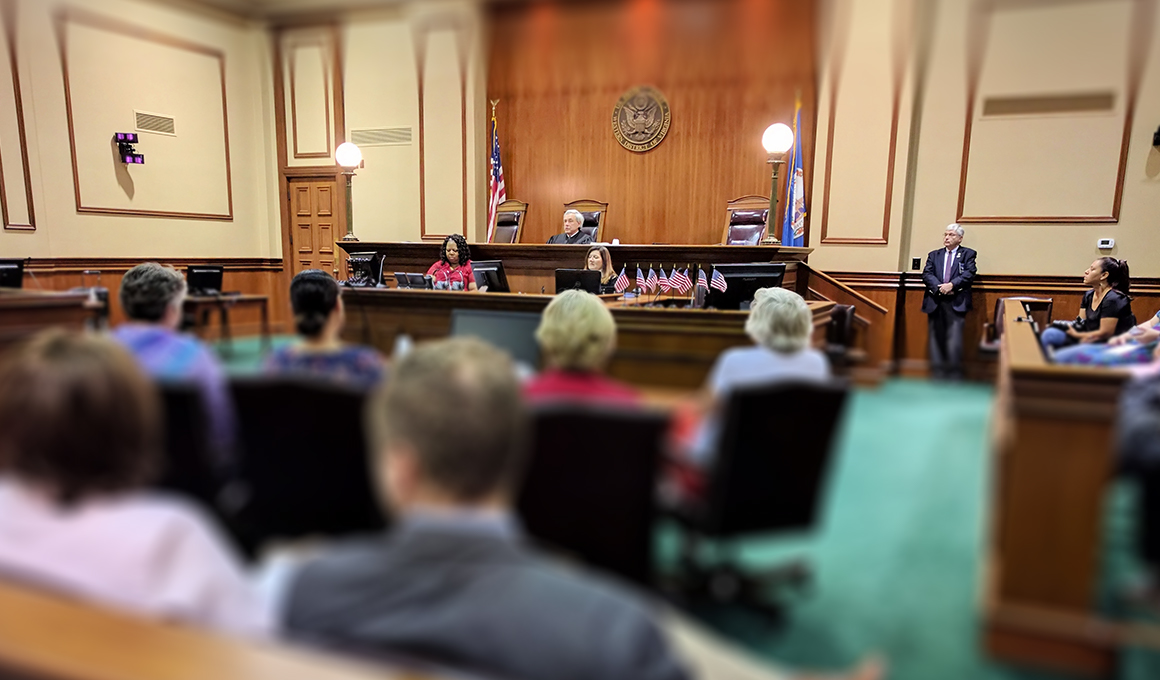Attorneys use custom trial presentations for compelling arguments.
Attorneys use custom trial presentations for compelling arguments.
Blog Article
How Trial Presentations Enhance Your Disagreement and Convince Jurors
Test presentations function as a pivotal device for improving lawful debates and convincing jurors. By integrating aesthetic help, narrative frameworks, and psychological involvement, attorneys can create an engaging case that resonates on numerous degrees. The strategic use visuals not just clarifies complicated details however likewise catches jurors' attention better than words alone. The art of storytelling plays a just as vital duty in transforming valid proof right into an engaging story, forming jurors' perceptions. Recognizing these components can significantly impact test end results, raising the concern of how each element adds to this complex dynamic.

Significance of Aesthetic Aids
Visual help play a critical function in enhancing the efficiency of trial presentations, as they can dramatically increase audience interaction and retention of info. In the context of a trial, where jurors are entrusted with processing complicated details, visual aids offer to simplify and clear up bottom lines. Graphes, charts, and photos can communicate data and principles that may otherwise overwhelm or perplex jurors, permitting for a much more uncomplicated understanding of the evidence presented.
Additionally, aesthetic aids aid in keeping juror attention throughout the process. By breaking the uniformity of verbal statement, these tools can stress important arguments, making them more remarkable. Reliable aesthetic aids can likewise stimulate emotional responses, which can be pivotal in persuading jurors to line up with the presenter's story.

Crafting Compelling Stories
A compelling narrative is important in trial presentations, as it serves as the backbone of efficient persuasion. It enables lawyers to weave with each other realities, evidence, and psychological components into a coherent tale that resonates with jurors. This narrative framework allows jurors to understand the complexities of the situation while guiding them via the lawyer's argument.
To craft a compelling story, lawyers should concentrate on quality and coherence. This includes developing a clear protagonist-- typically the client-- and outlining their trip through the events in concern. Offering the realities in a sensible series boosts understanding and preserves engagement. Additionally, the use of brilliant descriptions can produce mental photos that aid jurors visualize the occasions, making the story much more memorable.
Furthermore, incorporating crucial styles throughout the presentation reinforces the core message and help in retention - trial presentations. The story should not just share information but additionally evoke a feeling of justice, highlighting the risks involved. Inevitably, a well-constructed story cultivates a link between the jurors and the situation, positioning the lawyer's disagreement as both reputable and engaging, thereby raising the chance of a beneficial decision

Involving the Court Psychologically
Effective jury involvement depends upon the lawyer's ability to attach with jurors on a psychological degree. This link can significantly impact jurors' assumptions and their ultimate decision-making. Utilizing sob stories enables lawyers to humanize the case, transforming abstract lawful ideas into relatable experiences. By offering real-life stories or endorsements, attorneys can you can try these out evoke compassion and empathy, promoting a deeper understanding of the problems at stake.
Visual help, such as photographs or videos, can additionally improve emotional engagement, providing jurors with vivid depictions of the case's human elements. Crafting a story that highlights the battles and triumphs of the people included makes certain that jurors see past the lawful disagreements and recognize the human consequences of their decisions.
Furthermore, tone and body language play an essential function in communicating feeling. An attorney's passionate distribution can resonate with jurors, strengthening their emotional investment in case. It's essential to stabilize sob stories with factual evidence, making certain that jurors really feel forced to act while continuing to be based in the truth. Inevitably, an emotionally engaged court is extra likely to be persuaded, making psychological link an important part of reliable test discussions.
Structuring Your Presentation

The body of the discussion should be practically fractional right into bottom lines, each sustained by engaging evidence. It is helpful to utilize narration strategies to weave realities into a story that jurors can quickly follow. Visual aids, such as graphes and video clips, can boost comprehension and involvement, assisting to highlight essential pieces of proof.
Real-World Instance Studies
Checking out real-world case research studies provides invaluable understandings into the art of trial discussions and persuasion. The landmark situation of "O.J. Simpson v. The People of California" illustrates exactly how visual help and compelling narratives can sway court assumptions. The protection team successfully employed an approach that combined prominent expert statements with multimedia discussions, which mesmerized jurors and inevitably influenced their decision.
Another remarkable instance is the "McDonald's Coffee Situation," where the complainant's attorneys made use of graphic pictures of the injuries endured by Stella Liebeck. trial presentations. This plain aesthetic proof played a crucial role in sharing the extent of her burns, causing a significant jury award. Such situations show that impactful test presentations typically depend upon the efficient assimilation of visuals and storytelling to evoke psychological feedbacks from jurors
Additionally, the "Casey Anthony Trial" highlighted the significance of narrative coherence and reliability. The prosecution's failing to establish a compelling timeline diminished their convincing power, underscoring the requirement of a well-structured discussion. Evaluating these instances reveals that successful trial discussions need critical preparation, psychological involvement, and the ability to resonate with jurors' values and ideas.
Final Thought
Trial presentations significantly improve disagreements and persuade jurors through the calculated usage of aesthetic aids, engaging narratives, and psychological engagement. A well-structured presentation balances Discover More Here psychological appeals with valid evidence, ultimately resonating with jurors' worths.
Report this page